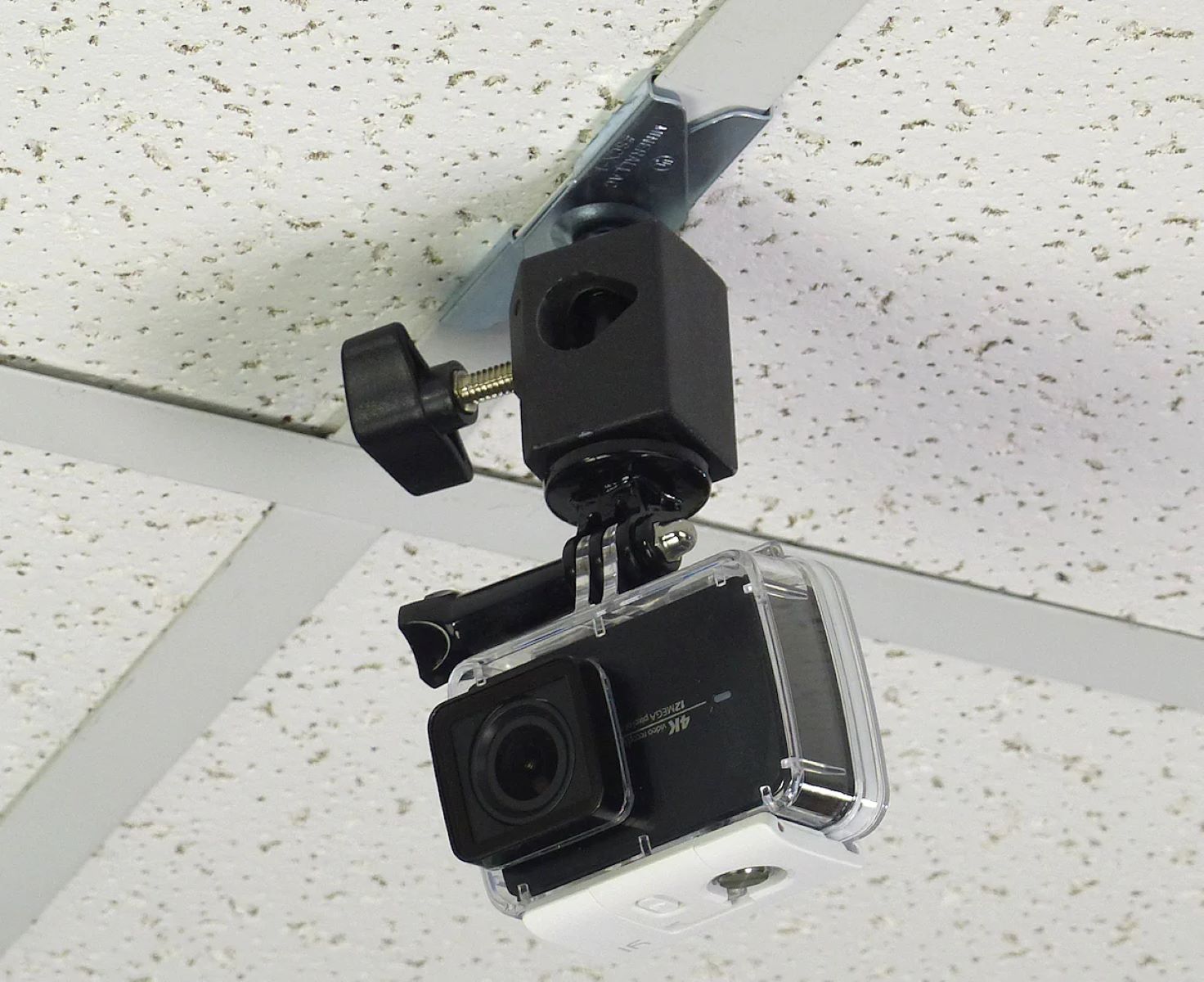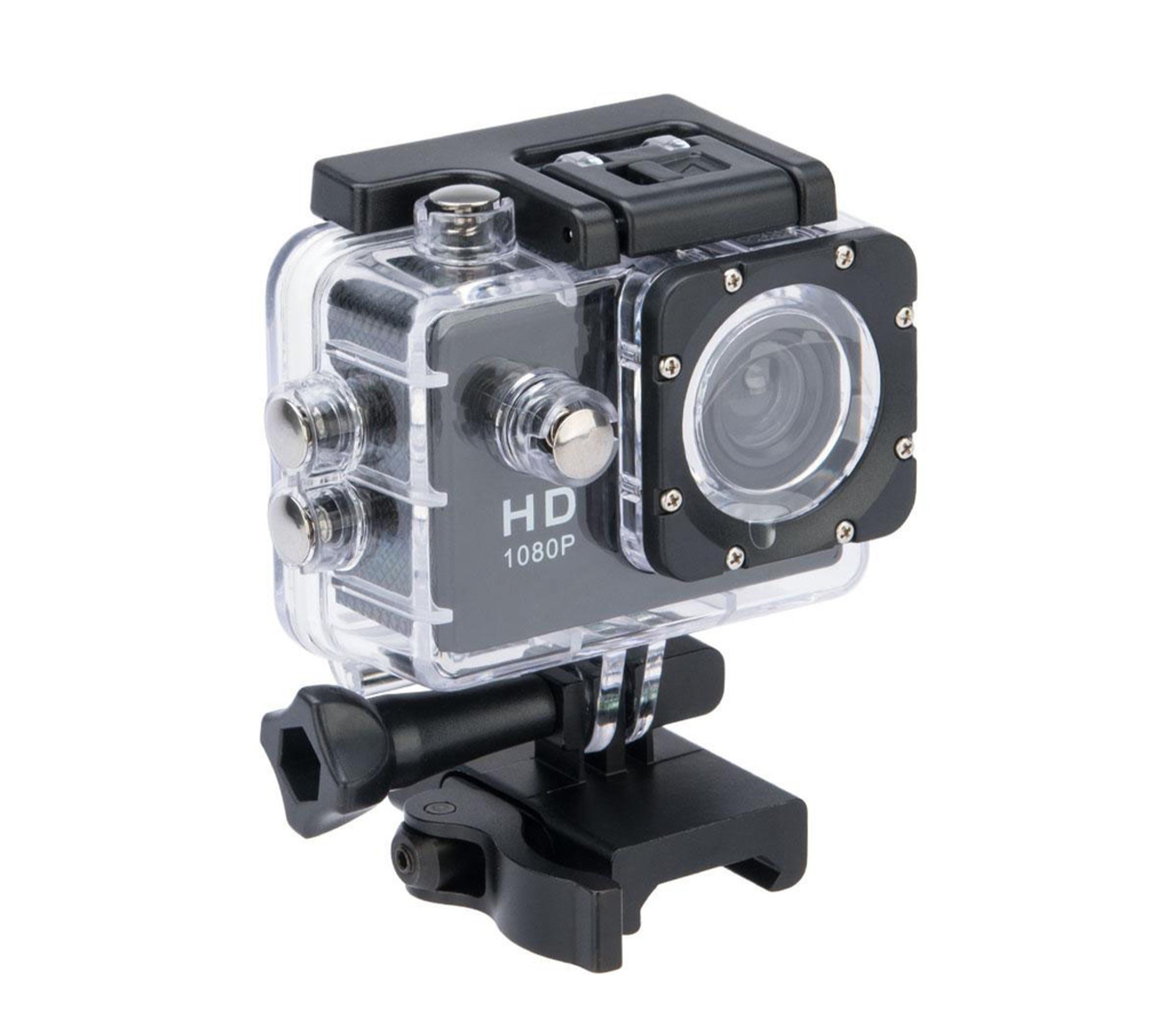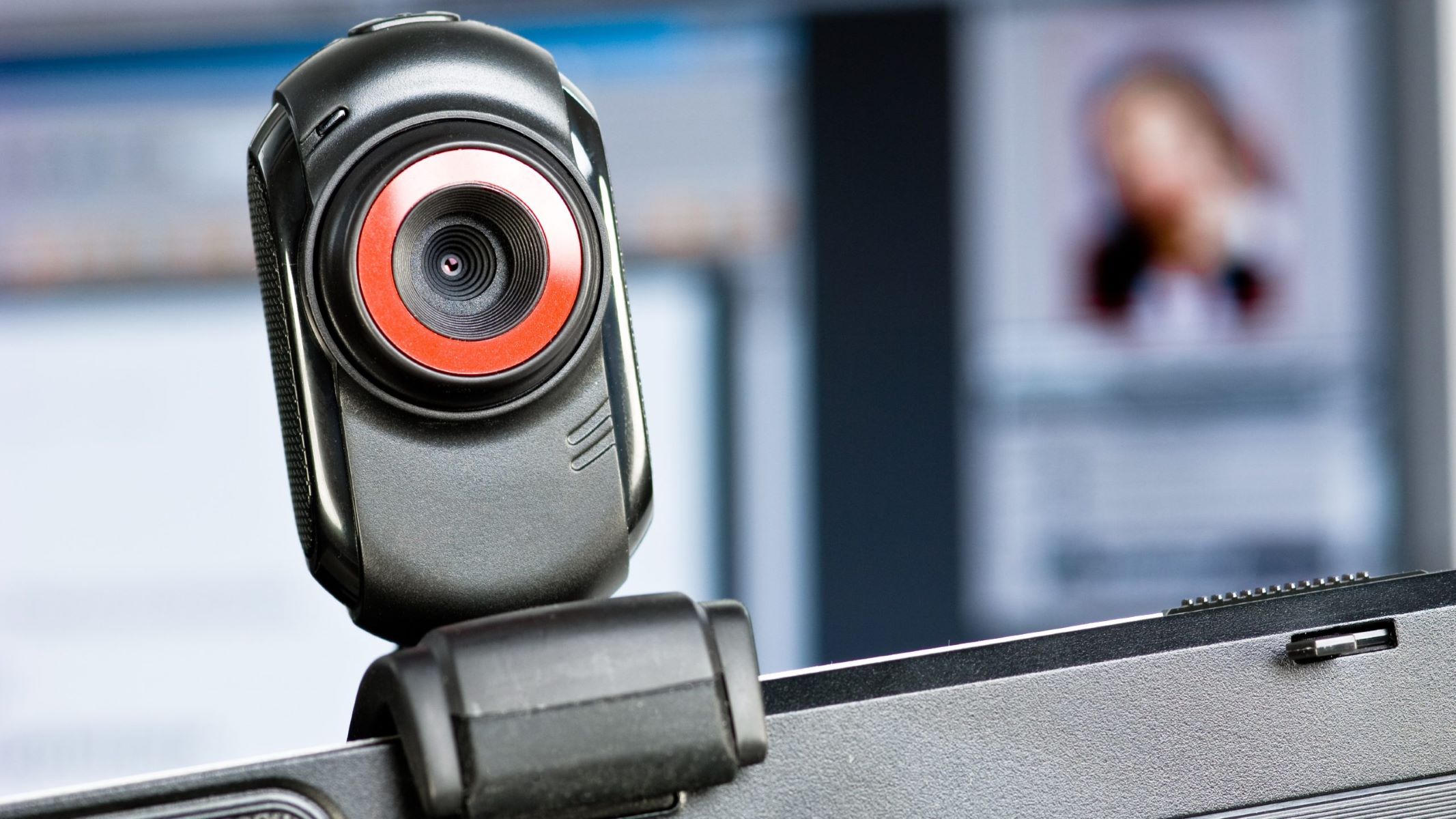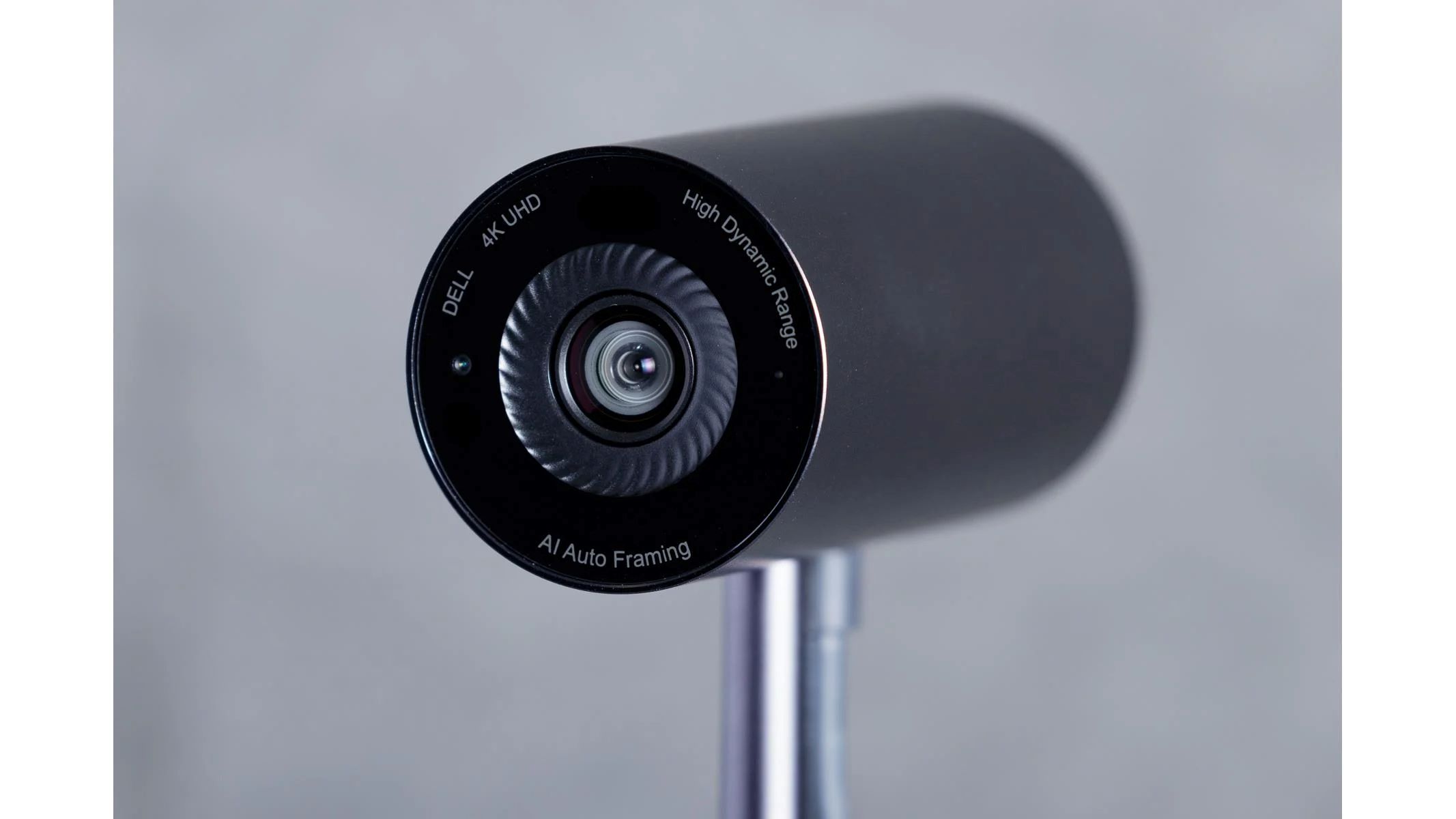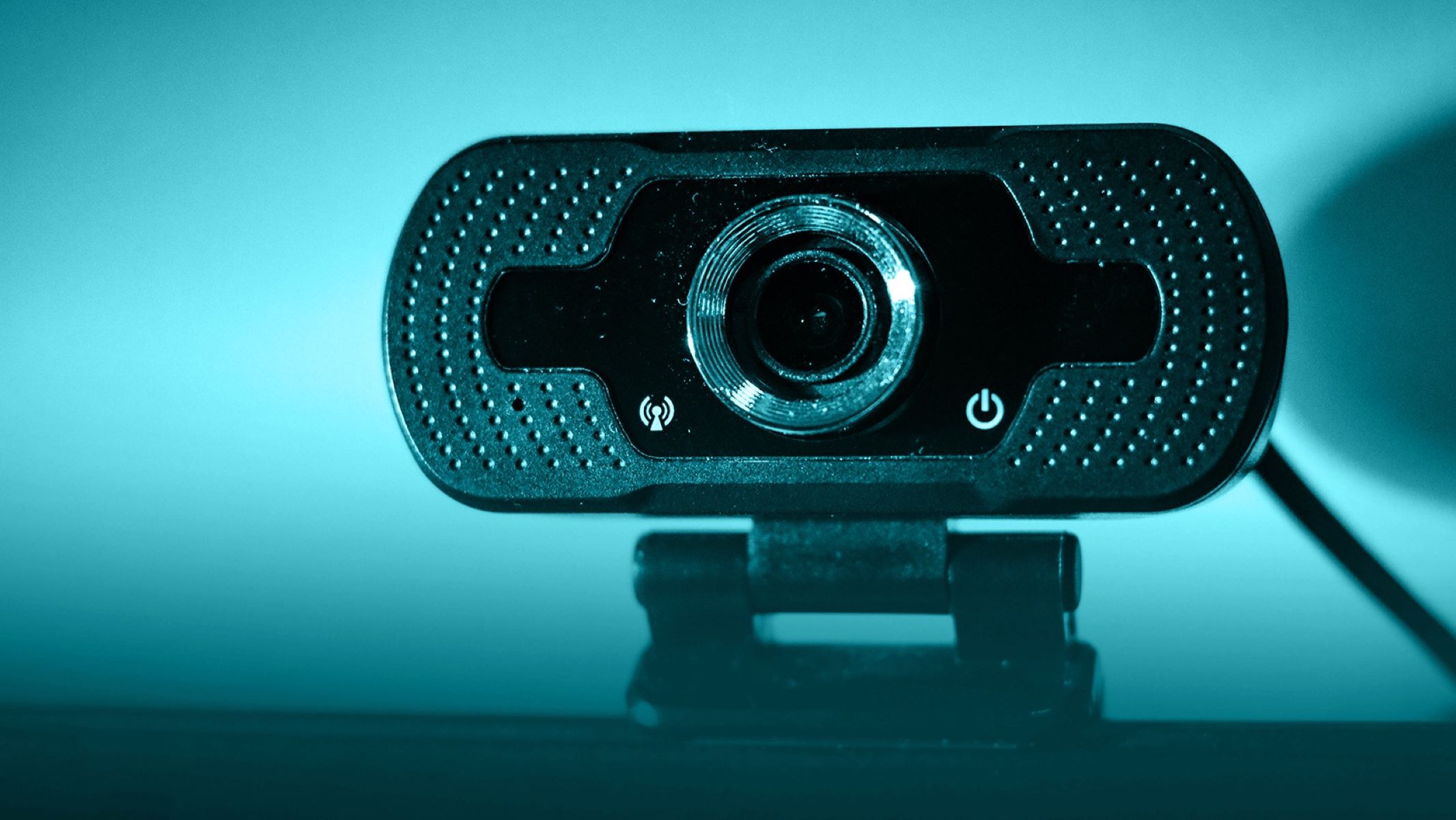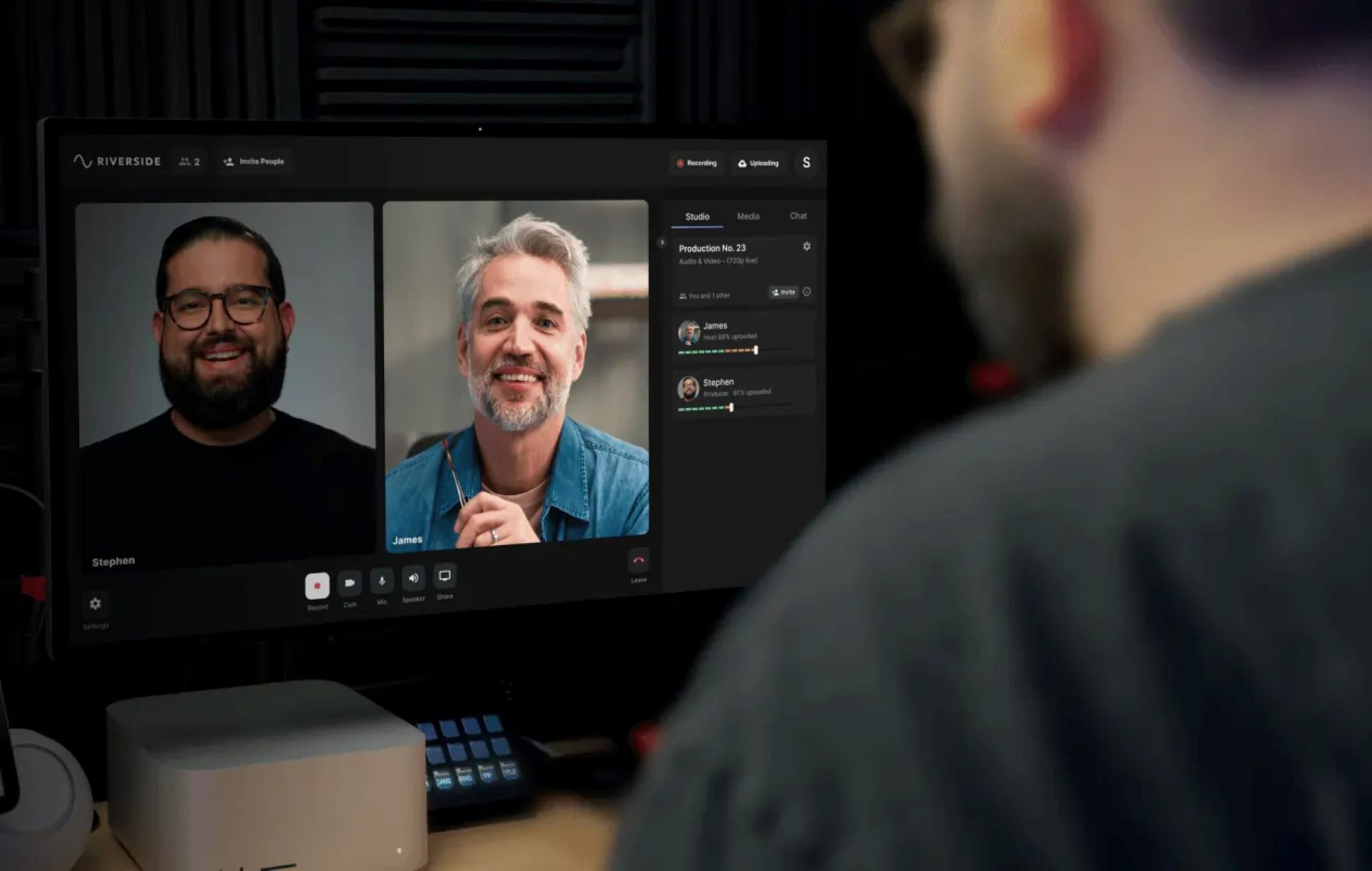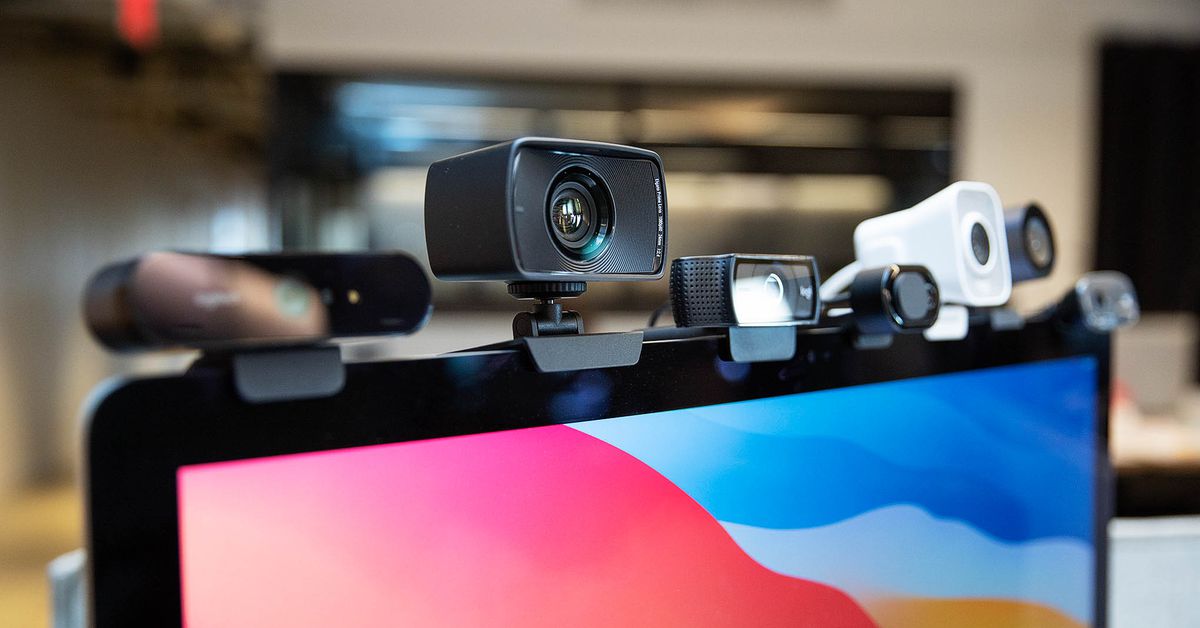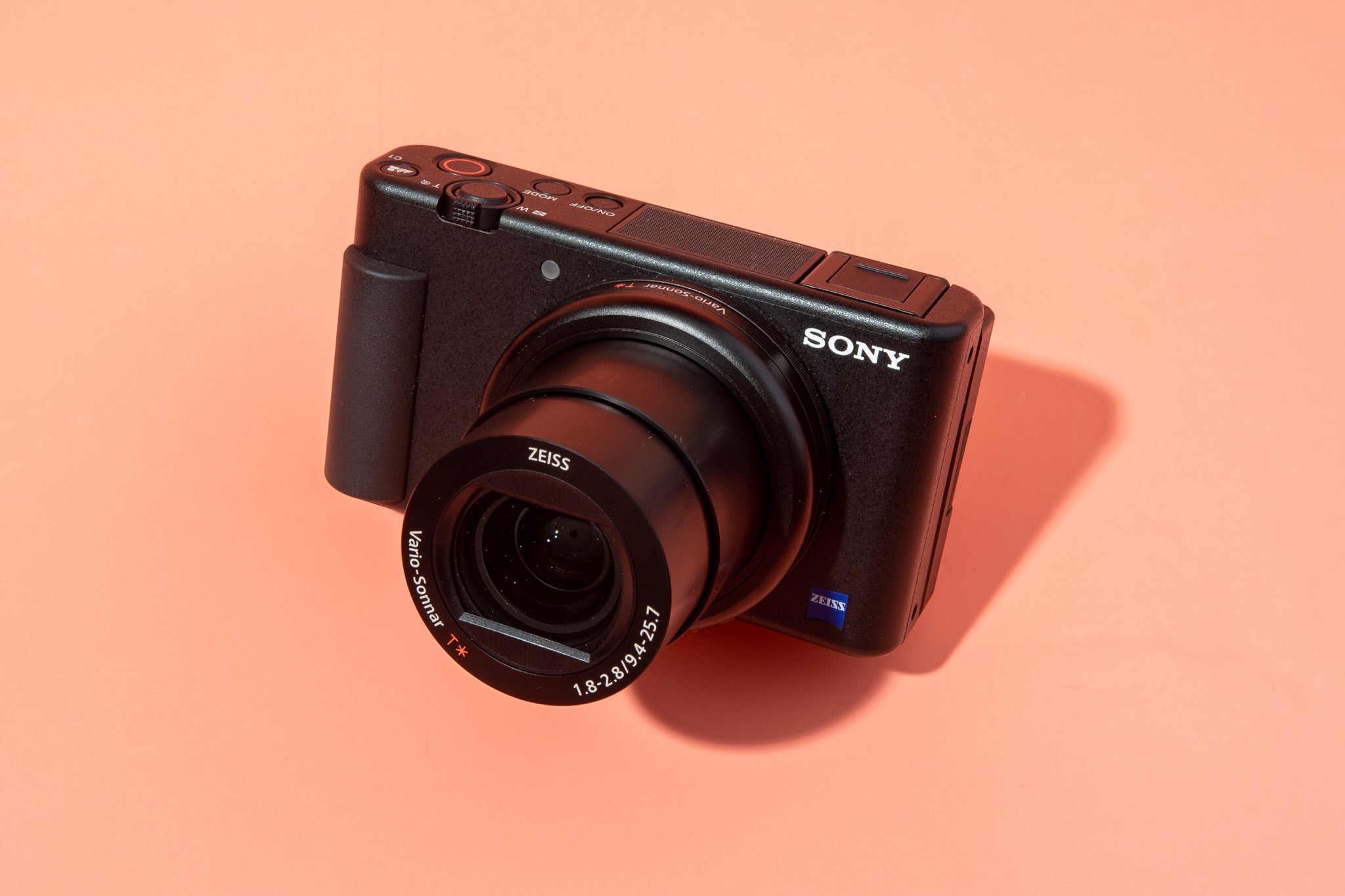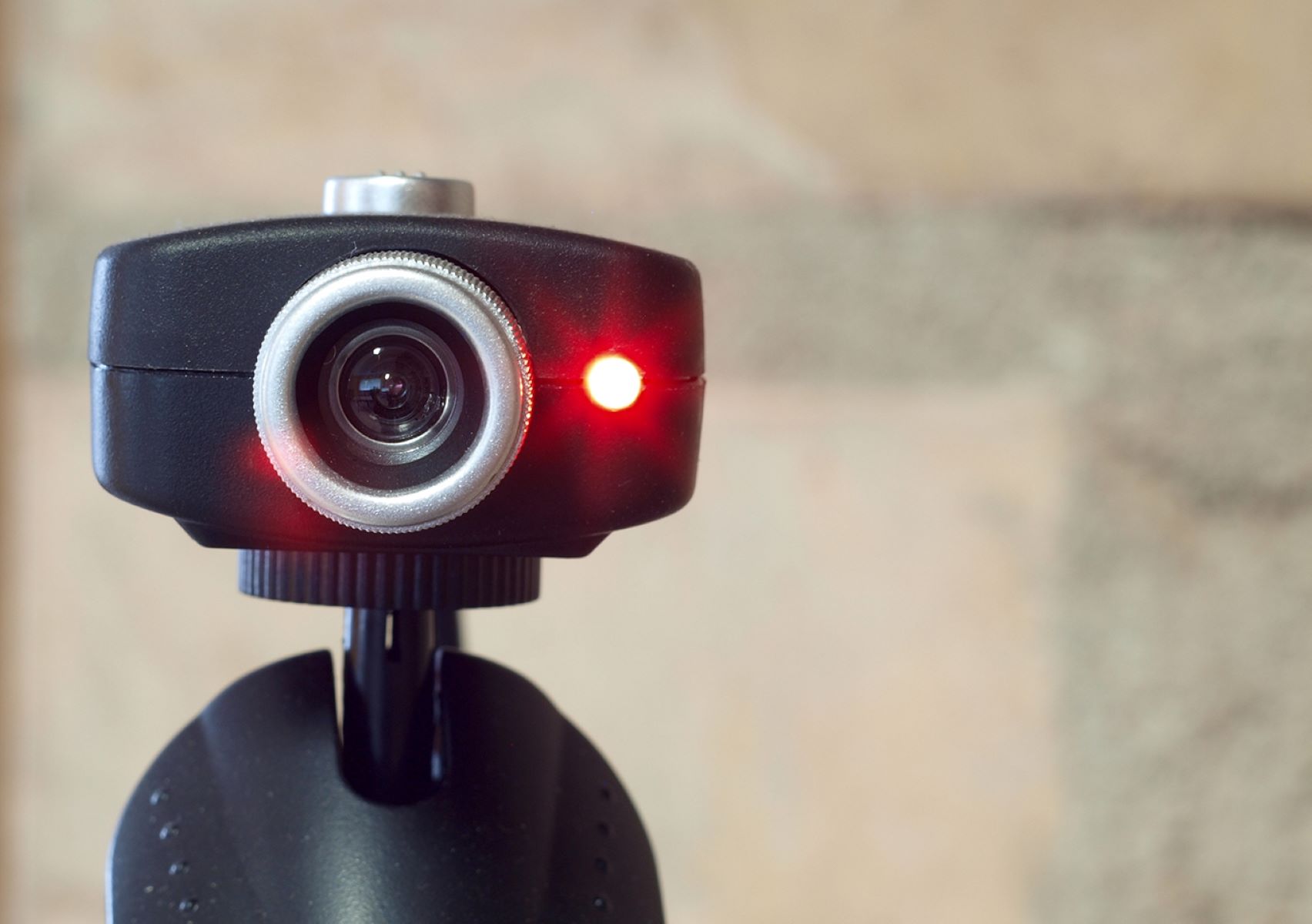Introduction
Are you looking to elevate your video conferencing game or enhance your live streaming setup? Action cameras are not just for capturing extreme sports and adventures; they can also serve as high-quality webcams for your computer. By repurposing your action camera as a webcam, you can enjoy superior video quality, wider angles, and enhanced versatility for your online interactions. Whether you're a content creator, a remote worker, or simply someone who wants to upgrade their video calls, utilizing an action camera as a webcam can be a game-changer.
In this guide, we'll walk you through the step-by-step process of transforming your action camera into a fully functional webcam. You'll learn how to check your camera's compatibility, install the necessary software, connect the camera to your computer, set it up as a webcam, adjust its settings, and finally, test it to ensure optimal performance.
By the end of this tutorial, you'll have the knowledge and confidence to harness the power of your action camera in a new, innovative way. Get ready to unlock the potential of your device and take your video communication to the next level. Let's dive into the exciting world of repurposing action cameras as webcams!
Step 1: Check Camera Compatibility
Before diving into the process of using your action camera as a webcam, it’s crucial to ensure that your camera is compatible with this functionality. Not all action cameras support the capability to function as webcams out of the box, so it’s essential to verify compatibility before proceeding.
First, consult the user manual or visit the official website of your action camera’s manufacturer to check if webcam functionality is supported. Manufacturers often provide detailed information about the camera’s features and supported applications, including the ability to be used as a webcam.
If the official documentation doesn’t explicitly mention webcam support, you can explore online forums, tech communities, or user groups dedicated to your specific action camera model. Fellow users may have experimented with using the camera as a webcam and can provide valuable insights, tips, and potential workarounds.
Additionally, some action camera models require firmware updates to enable webcam functionality. Check for any available firmware updates for your camera on the manufacturer’s website and follow the instructions to ensure that your device is running the latest software that includes webcam support.
Furthermore, consider the connectivity options of your action camera. Some models may offer USB or HDMI connectivity, which are commonly used for webcam setups. Ensure that your camera’s connectivity aligns with the ports available on your computer to establish a seamless connection.
By thoroughly assessing your action camera’s compatibility with webcam usage, you can set the stage for a successful transformation of your device into a powerful webcam. Once you’ve confirmed compatibility, you can proceed with confidence to the next steps of the process.
Step 2: Install Necessary Software
After confirming the compatibility of your action camera for use as a webcam, the next crucial step is to install the required software on your computer. While some action cameras may be plug-and-play compatible with webcam functionality, others may necessitate the installation of specific software or drivers to enable this feature.
Begin by visiting the official website of the action camera’s manufacturer to check for any proprietary webcam software or drivers designed for your camera model. These resources are often available for download in the support or downloads section of the website. Ensure that you select the software or drivers that correspond to your camera model and the operating system of your computer.
If the manufacturer’s website doesn’t offer dedicated webcam software or drivers, explore reputable third-party sources that provide universal webcam drivers or software solutions. Be cautious when downloading software from third-party websites and prioritize sources with positive user reviews and a strong reputation for providing safe and reliable downloads.
Once you’ve obtained the necessary software or drivers, follow the installation instructions provided by the manufacturer or the third-party source. It’s essential to carefully execute the installation process, ensuring that the software is correctly integrated with your operating system and any required settings are configured appropriately.
After the installation is complete, restart your computer to finalize the setup and allow the newly installed software or drivers to take effect. This step is crucial for ensuring seamless communication between your action camera and your computer, optimizing the performance of the camera as a webcam.
By installing the essential software or drivers, you pave the way for harnessing the full potential of your action camera as a high-quality webcam. With this foundational step completed, you’re ready to proceed to the next stages of the process, bringing you closer to unlocking the enhanced video capabilities of your device.
Step 3: Connect the Camera to Your Computer
With the necessary software or drivers installed, it’s time to establish a physical connection between your action camera and your computer. Depending on your camera model and available connectivity options, there are several methods to achieve this connection, allowing your computer to recognize the action camera as a webcam.
If your action camera features a USB port, use a compatible USB cable to connect the camera to an available USB port on your computer. Ensure that the USB cable is firmly plugged into both the camera and the computer to establish a secure connection. Once connected, your computer should detect the action camera as a new device.
For action cameras equipped with HDMI output, you can utilize an HDMI capture device or an HDMI input on your computer, such as a capture card, to facilitate the connection. Connect the HDMI output of the action camera to the HDMI input of the capture device or computer, enabling the transmission of video and audio data from the camera to the computer.
Some modern action cameras also support wireless connectivity options, allowing you to establish a wireless connection with your computer. If your camera offers Wi-Fi or Bluetooth connectivity, follow the manufacturer’s instructions to pair the camera with your computer wirelessly, enabling seamless communication between the two devices.
Once the physical connection is established, ensure that the action camera is powered on and set to the appropriate mode for webcam functionality. Depending on the camera model, you may need to navigate through the camera’s settings menu to enable the webcam mode or select the desired output mode for video transmission to the computer.
By successfully connecting your action camera to your computer, you’ve laid the groundwork for leveraging the camera’s impressive imaging capabilities for video conferencing, live streaming, and other visual communication needs. With the camera and computer now linked, you’re ready to proceed to the next steps and fine-tune the setup to maximize the potential of your action camera as a webcam.
Step 4: Set Up the Camera as a Webcam
After establishing the physical connection between your action camera and your computer, it’s time to configure the camera to function seamlessly as a webcam. This step involves adjusting settings on both the camera and your computer to ensure that the camera’s video and audio output are recognized and utilized as the primary source for video communication applications.
Begin by accessing the settings or preferences of your video conferencing or live streaming software on your computer. In the settings menu, look for the option to select a video input device or camera source. If your action camera is successfully connected and recognized, it should appear as an available camera source in the software’s settings. Select your action camera from the list of available devices to designate it as the primary webcam for the application.
Next, navigate to the settings or menu of your action camera itself. Depending on the model, you may need to configure the camera to operate in webcam mode. This can involve selecting the webcam functionality from the camera’s menu, enabling live video output, or adjusting specific settings related to video transmission and audio input. Refer to the camera’s user manual or online resources for detailed instructions on activating the webcam mode.
Ensure that the camera’s video and audio settings align with the requirements of your video communication software. Verify that the video resolution, frame rate, and audio input levels are optimized for clear, high-quality output. Adjust any additional settings, such as exposure, white balance, or field of view, to enhance the visual presentation of the camera’s feed.
Once the camera settings are configured, return to your video communication software to test the camera’s functionality. Initiate a video call or begin a test live stream to confirm that the action camera is successfully operating as a webcam. Monitor the video and audio output to ensure that the camera’s feed is stable, clear, and synchronized with the software’s requirements.
By setting up your action camera as a webcam, you’re capitalizing on the advanced imaging capabilities of the camera to deliver exceptional visual content for your online interactions. With the camera and software settings aligned, you’re ready to fine-tune the setup and optimize the camera’s performance as a dedicated webcam for your computer.
Step 5: Adjust Camera Settings
With your action camera now functioning as a webcam, it’s essential to fine-tune its settings to ensure optimal performance and visual quality. By adjusting the camera’s settings, you can enhance the clarity, exposure, and overall presentation of the video feed, creating a professional and engaging visual experience for your online audience.
Begin by assessing the lighting conditions in your environment. Depending on the lighting, adjust the camera’s exposure settings to achieve a balanced and well-lit image. Many action cameras offer exposure compensation or manual exposure settings that allow you to control the brightness of the video feed. Experiment with these settings to achieve the most flattering and natural lighting for your video communication.
Consider the white balance of the camera to ensure that colors are accurately represented. If the camera offers manual white balance adjustment, use this feature to neutralize any color casts and maintain true-to-life color reproduction. Alternatively, select an appropriate white balance preset that corresponds to the lighting conditions in your space.
Explore the camera’s field of view settings to determine the optimal framing for your video feed. Some action cameras offer adjustable field of view options, allowing you to switch between wide-angle and narrow-angle perspectives. Select a field of view that best suits your intended use, whether it’s capturing a broad view of your surroundings or focusing on specific details within the frame.
Adjust the resolution and frame rate of the camera to align with the requirements of your video communication software and the capabilities of your computer. Opt for higher resolutions and frame rates to deliver crisp, fluid video output, provided that your computer and internet bandwidth can support these settings without compromising performance.
Furthermore, explore any additional settings specific to your action camera model, such as image stabilization, audio input levels, or noise reduction features. Fine-tune these settings to minimize distractions, ensure steady video output, and optimize the audio quality of the camera’s feed.
By meticulously adjusting the camera settings, you’re elevating the visual impact of your action camera’s output, transforming it into a professional-grade webcam that delivers stunning video quality for your online interactions. With the settings optimized, your action camera is primed to deliver exceptional visual content, setting the stage for captivating and immersive video communication experiences.
Step 6: Test the Camera as a Webcam
After configuring your action camera and computer for webcam functionality, it’s imperative to conduct comprehensive testing to ensure that the camera delivers the desired performance and seamlessly integrates into your video communication setup. Testing the camera as a webcam allows you to identify and address any potential issues, fine-tune the settings, and verify the quality of the video and audio output.
Initiate a video call or open your preferred video communication software to begin the testing process. Ensure that the action camera is selected as the primary video input device within the software’s settings. With the camera activated, assess the video feed to confirm that it appears clear, well-lit, and properly framed, reflecting the adjustments made to the camera’s settings.
Engage in a test video call with a trusted contact or conduct a self-assessment by recording a brief video using the action camera as a webcam. During the call or recording, pay attention to the video and audio quality, ensuring that the camera’s output aligns with your expectations in terms of clarity, color accuracy, and audio fidelity. Assess the stability of the video feed and verify that the audio input is synchronized and free from distortions.
Explore the camera’s performance in various scenarios, such as different lighting conditions, movement, and distance from the camera. By testing the camera under diverse conditions, you can gauge its adaptability and versatility, ensuring that it consistently delivers exceptional video quality across a range of usage scenarios.
Assess the compatibility of the camera with different video communication applications and platforms. Test the camera’s functionality across multiple software environments, such as video conferencing apps, live streaming platforms, and recording software, to confirm its seamless integration and consistent performance across diverse applications.
During the testing phase, solicit feedback from your test audience or colleagues regarding the visual and audio quality of the camera’s feed. Consider their observations and recommendations to further refine the camera’s settings and ensure that it meets the standards of professional video communication.
By rigorously testing the action camera as a webcam, you can validate its suitability for your specific needs, refine its settings for optimal performance, and gain confidence in its ability to deliver exceptional visual content for your online interactions. With the camera’s performance validated through comprehensive testing, you’re well-positioned to leverage its advanced imaging capabilities to elevate your video communication experiences.
Conclusion
Congratulations! By following the comprehensive guide outlined above, you have successfully repurposed your action camera into a high-quality webcam, unlocking its full potential for video conferencing, live streaming, and online communication. Through careful consideration of compatibility, software installation, physical connectivity, and meticulous adjustments to settings, you have transformed your action camera into a versatile and powerful tool for visual communication.
Utilizing an action camera as a webcam offers numerous advantages, including superior video quality, wider field of view, and enhanced adaptability for various usage scenarios. Whether you’re engaging in virtual meetings, creating captivating live streams, or connecting with friends and family, the action camera’s imaging capabilities elevate the visual experience, creating a more immersive and professional interaction.
As you continue to leverage your action camera as a webcam, remember to periodically revisit its settings to optimize performance, adapt to different environments, and refine the visual and audio output. Stay informed about firmware updates, software enhancements, and new features that may further enhance the camera’s functionality as a webcam, ensuring that you consistently deliver exceptional video content.
By embracing the innovative approach of repurposing your action camera as a webcam, you’ve expanded the creative possibilities of your device, maximizing its value and utility in the realm of digital communication. Embrace the flexibility and visual prowess of your action camera as it continues to enrich your online interactions and elevate the quality of your video communication experiences.
With your action camera seamlessly integrated as a webcam, you’re poised to make a lasting impression, captivate your audience, and forge meaningful connections through the power of compelling visual content. Embrace this newfound capability and embark on a journey of enhanced online communication, leveraging the advanced imaging prowess of your action camera to leave a lasting impact in the digital realm.







